***
#328
It really is amazing how many different ways there are to express the outturn from a single Guyanese still, Enmore or Port Mourant or any of the others We might have to approach them like James Bond movies (or Sherlock Holmes short stories)…enjoying the similarities while searching for points of variation, which gives us the rare rum equivalents of masterpieces like Skyfall versus occasionally indifferent efforts like A View to a Kill.
Rum Nation’s first serious foray into multiple-edition small-batch cask strength rums probably deserve to be tried as a trio, the way, for example, DDL’s three amigos from 2007 are. Each of the three is unique in its own way, each has points that the others don’t, and if one is weak, it’s made up for with strengths of another and they work best taken together. Of course, that’ll cost you a bit, since rums made at full proof are not cheap, but to have rums like this at 40% is to do a disservice to those famous stills from which Demerara rums are wrung with such effort and sweat. Even DDL finally came around to accepting that when they issued their own Rare Casks collection earlier in 2016.
Of the three Rum Nation rums I tried (in tandem with several others), there was no question in my mind that this one sat square in the middle, not just in the trio, but in the entire Enmore canon. Personally I always find Enmores somewhat of hit or miss proposition – sometimes they exceed expectations and produce amazing profiles, and sometimes they disappoint, or at least fall short of expectations (like the Renegade Enmore 1990 16 year old did)….another property they share with Bond movies However, it must also be said that they are very rarely boring. That wooden still profile gives them all a character that is worth trying…several times.
Take this one for example, an interesting medium-aged fourteen-year-old, almost lemon-yellow rum, with an outturn of 442 bottles from six casks (77-82). It was distilled in 2002 and bottled this year, the first batch of Rum Nation’s cask strength series, with a mouth watering 56.8% ABV…now there’s a strength almost guaranteed to make an emphatic statement on your schnozz and your glottis. And before those of you who prefer no adulteration ask — no, as far as I’m aware, it wasn’t messed with.
The nose demonstrated that the colour was no accident; it was sprightly, almost playful with clean notes of hay, planed-off wood shavings, lemony notes. Not for this rum the pungent, almost dour Port Mourant depth – here it was crisper, cleaner. Gradually other aspects of the profile emerged – old, very ripe cherries, apples, cider, vanilla. As if bored, it puffed out some mouldy cardboard and cherries that have gone off, before relenting and providing the final subtle anise note, but clearer, lighter, and nothing like the PM, more like a cavatino lightly wending its way through the main melody.
Certainly the nose was excellent – but the palate was something of a let down from the high bar that it set. It was, to begin with, quite dry, feeling on the tongue like I was beating a carpet indoors. It was less than full bodied, quite sharp and hot, with initial flavours of polish, sawdust and raisins, a flirt of honey; it was only with some water that other flavours were coaxed out — wax and turpentine, orange chocolates, dates, vanilla and Indian spices (in that sense it reminded me of the Bristol Spirits 1988 Enmore), and some eucalyptus, barely noticeable. It was the sawdust that I remember, though (not the citrus)…it reminded me of motes hanging motionless in a dark barn, speared by seams of light from the rising sun outside. The finish was pleasant, reasonably long, repeating the main themes of the palate, without introducing anything new.
Overall, this is a rum that, while professionally executed and pleasant to drink (with a really good nose), breaks little new ground – it doesn’t take the Enmore profile to heights previously unscaled. Yet I enjoyed it slightly more than the RN Diamond 2005 I looked at before. Partly this is about the character of the whole experience, the way the various elements fused into a cohesive whole. My friend Henrik, who also tried these three Small Batch Rare Rums together, was much more disapproving – he felt the Enmore was the weakest of the three, with light woods and citrus being all there was. My own opinion was that there was indeed less going on here than in other editions I’ve tried, but part of what I enjoyed was the way that what there was melded together in a way where little failed and much succeeded. And if it did not come up to the level of other Enmores like the Compagnie des Indes 1988 27 year old (91 points), or the Velier 1988 19 year old (89 points), well, I felt it was still better than others I’ve tried, and by my yardstick, a damned good entry into the genre. Something like, oh, Thunderball or Goldeneye – not the very best, but far, far from the worst.
(87/100)
Other notes
- To provide some balance for those who are curious,see the links to two other sets of reviews:
- Henrik of RumCorner, who liked the entire Collection less than I did
- Tiare of A Mountain Of Crushed Ice, who was more positive (but who does not score).
- As with all expressions where there are differences in opinion, trying before buying is the way to go, especially if your personal tastes
- I’m waiting on Fabio to tell me where the ageing took place – I have a feeling a good portion was in Europe.


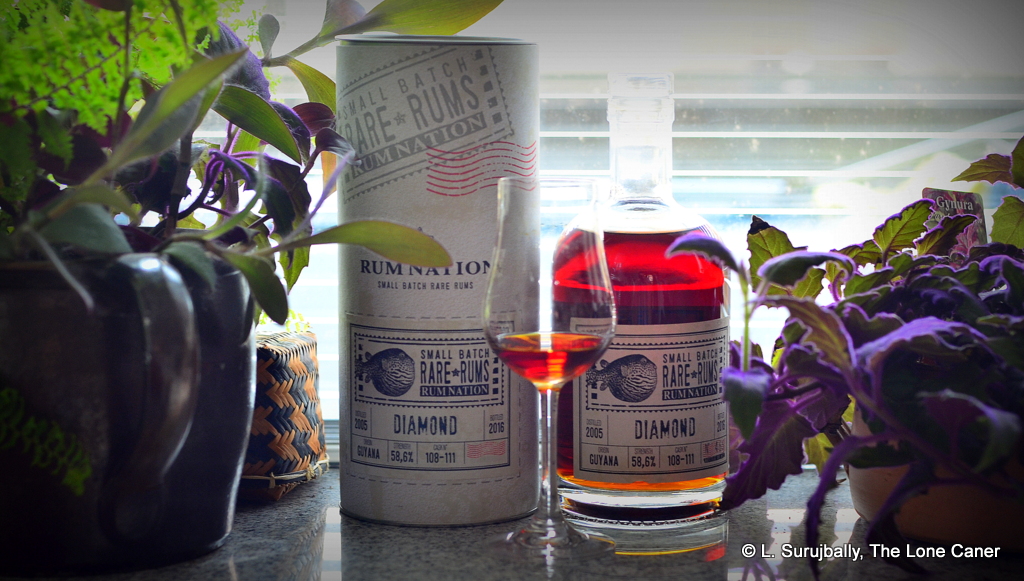
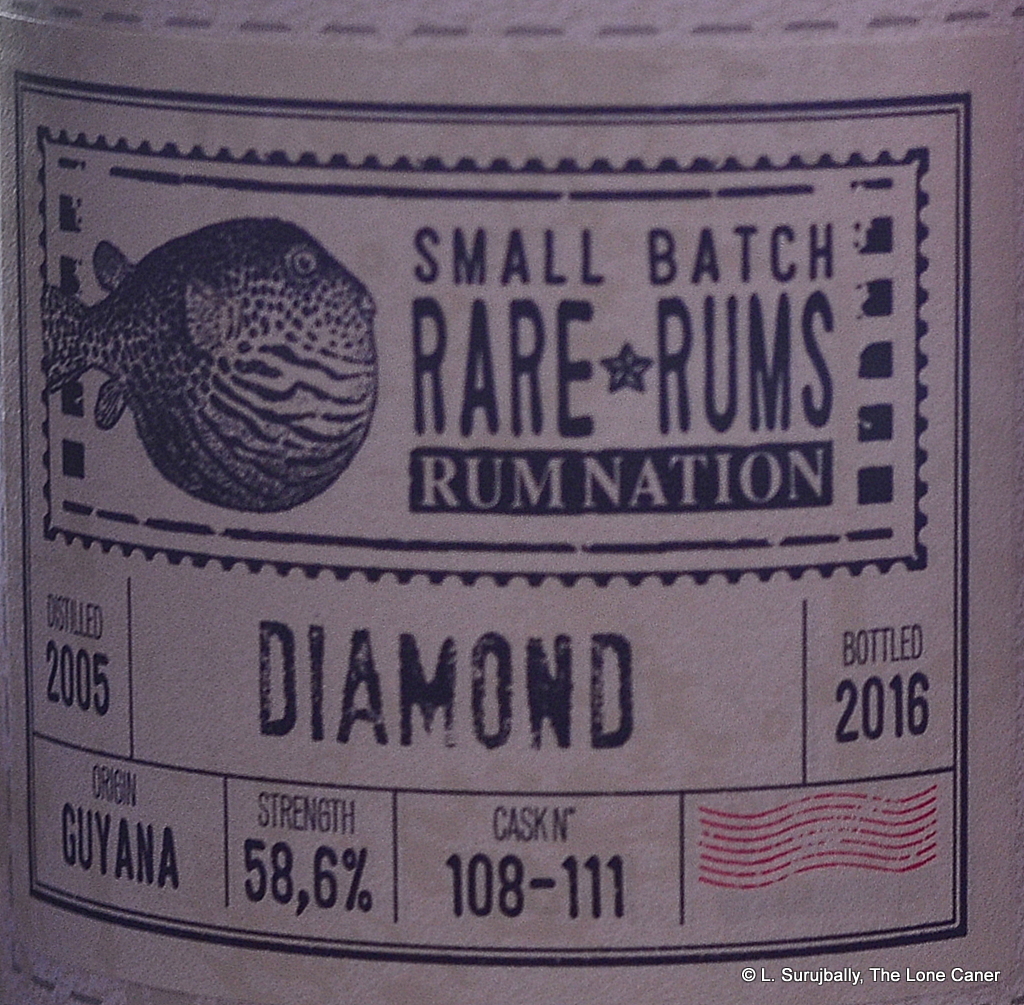
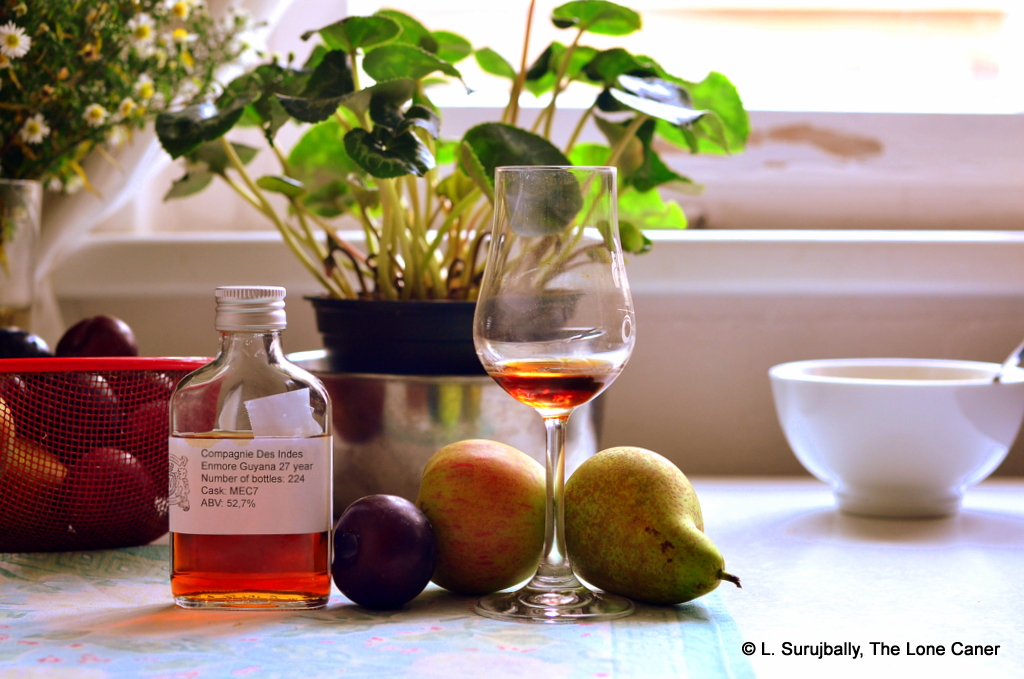
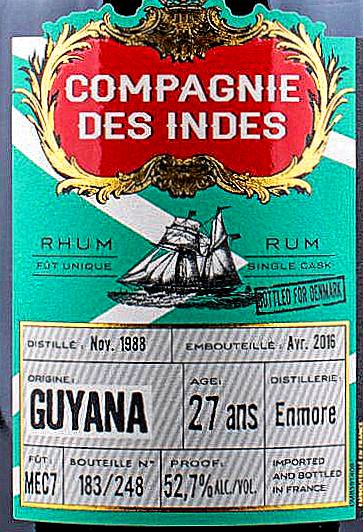
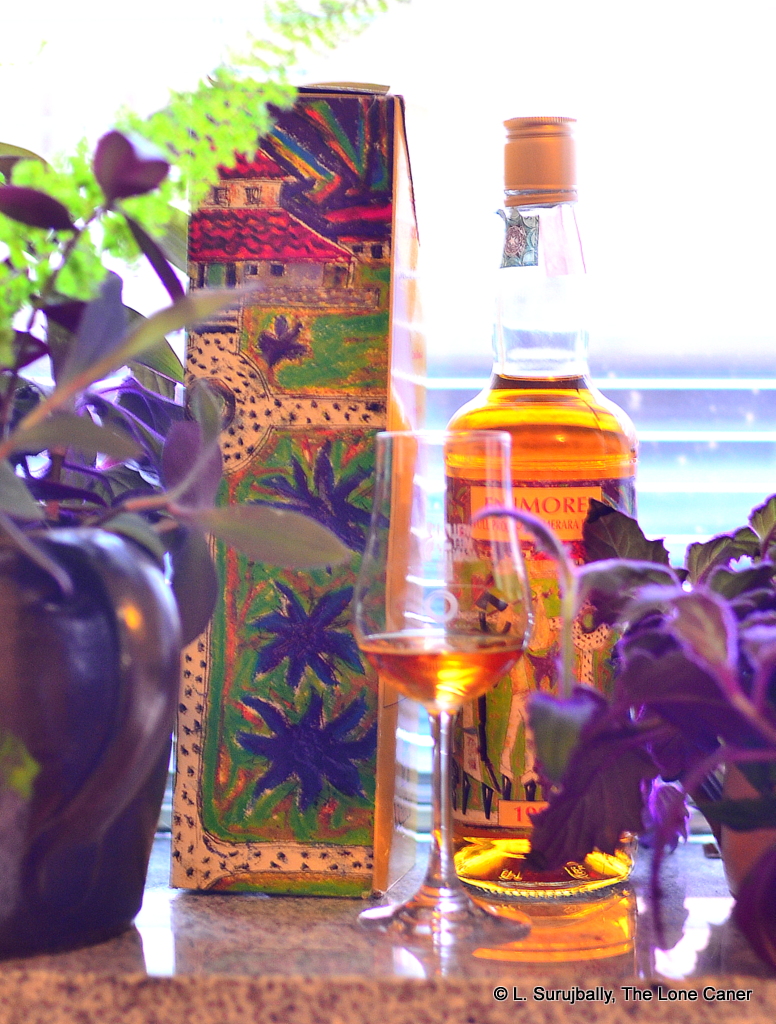


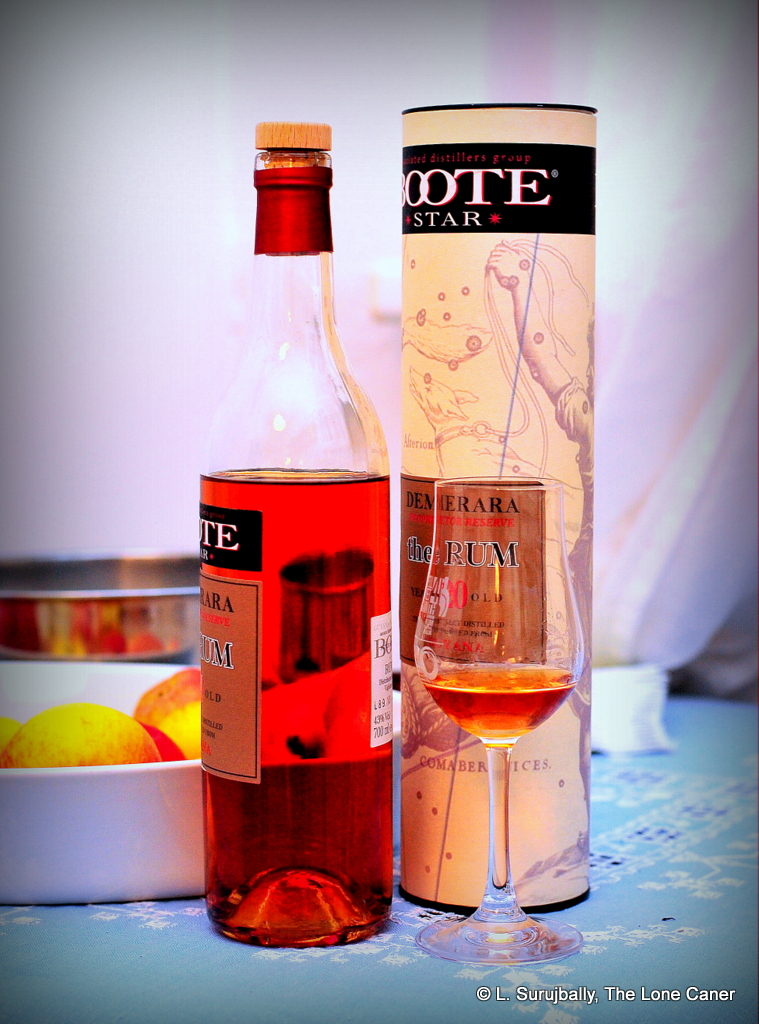

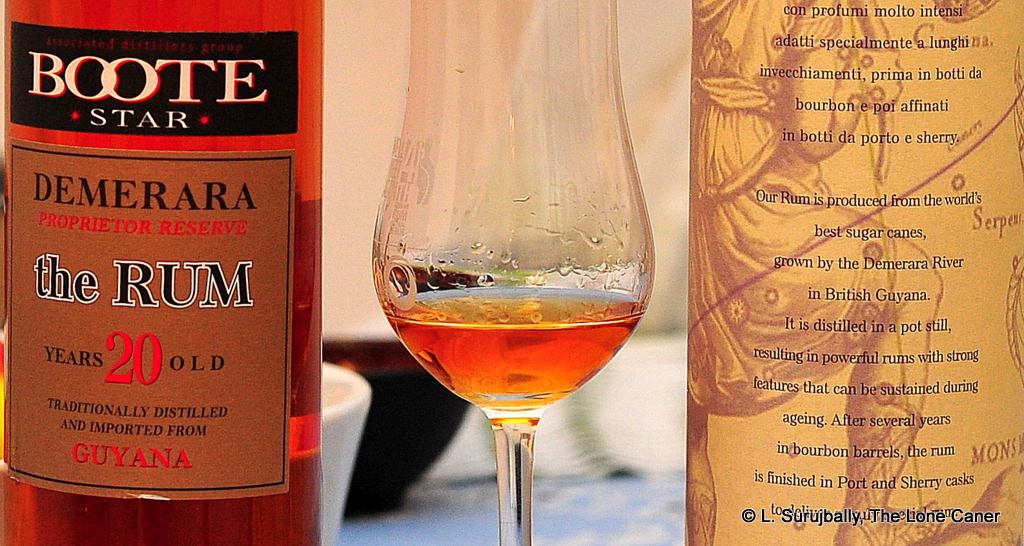
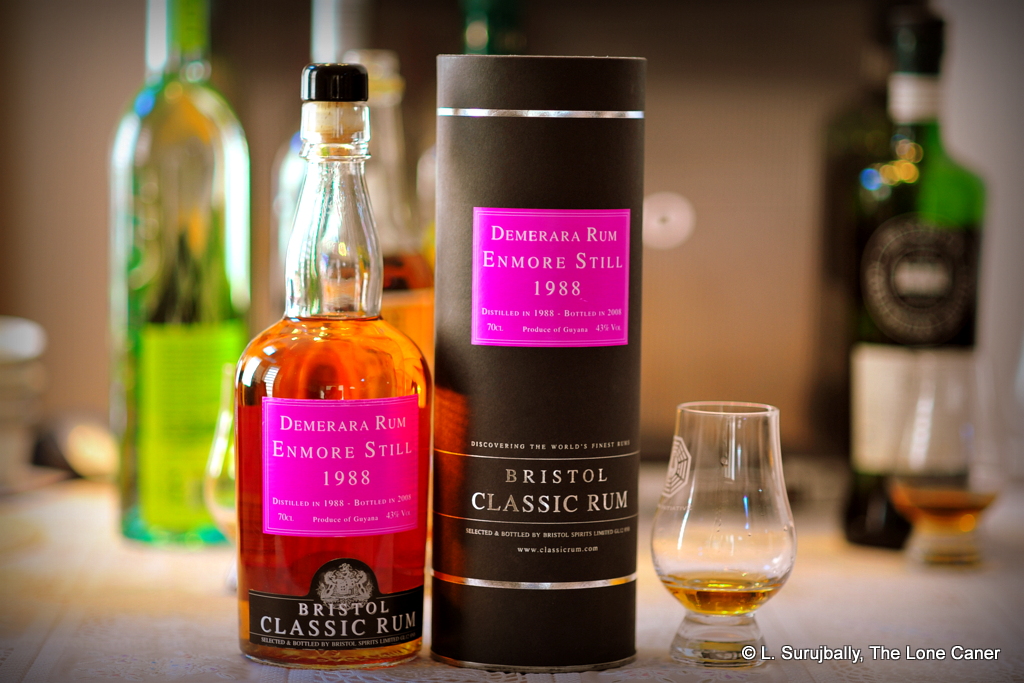
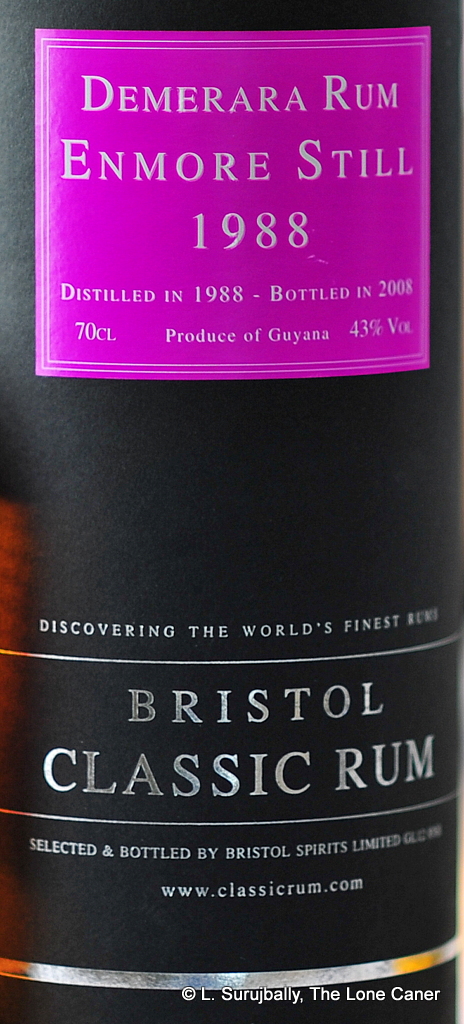
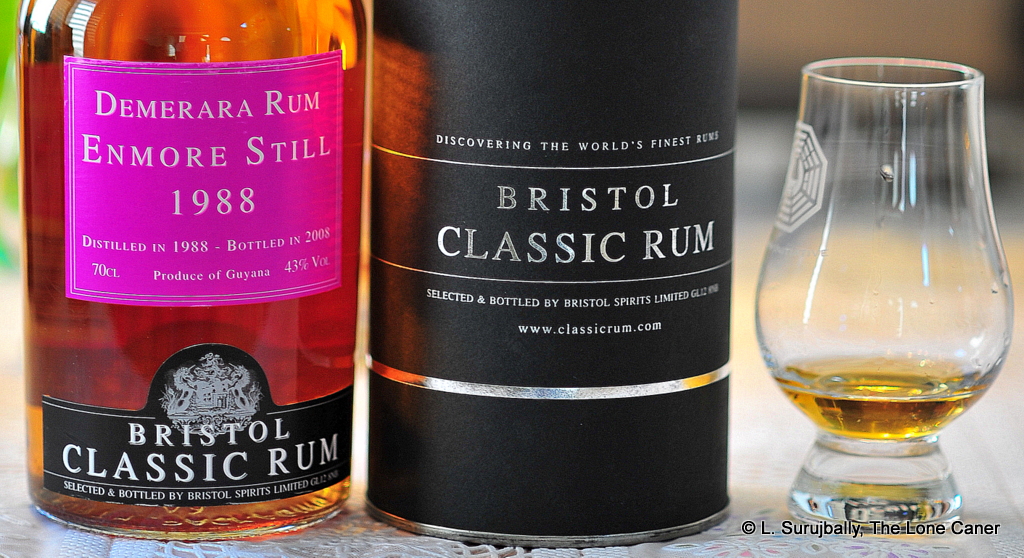
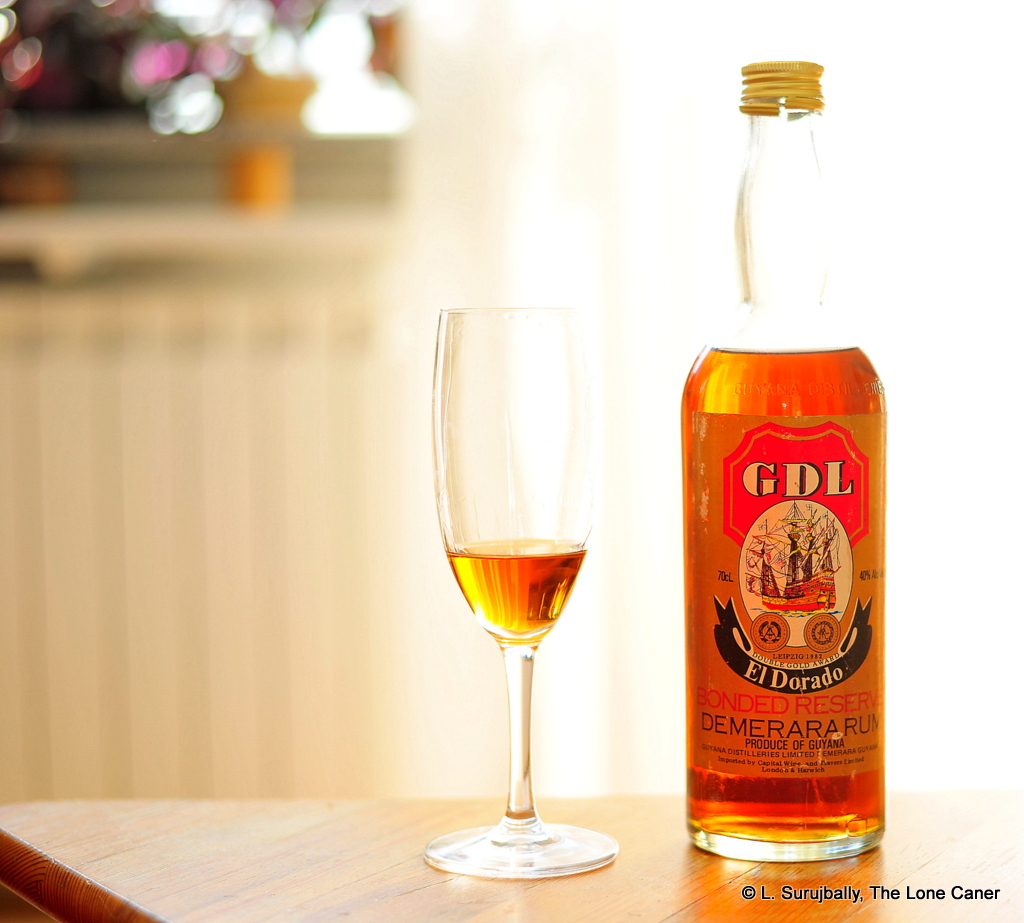
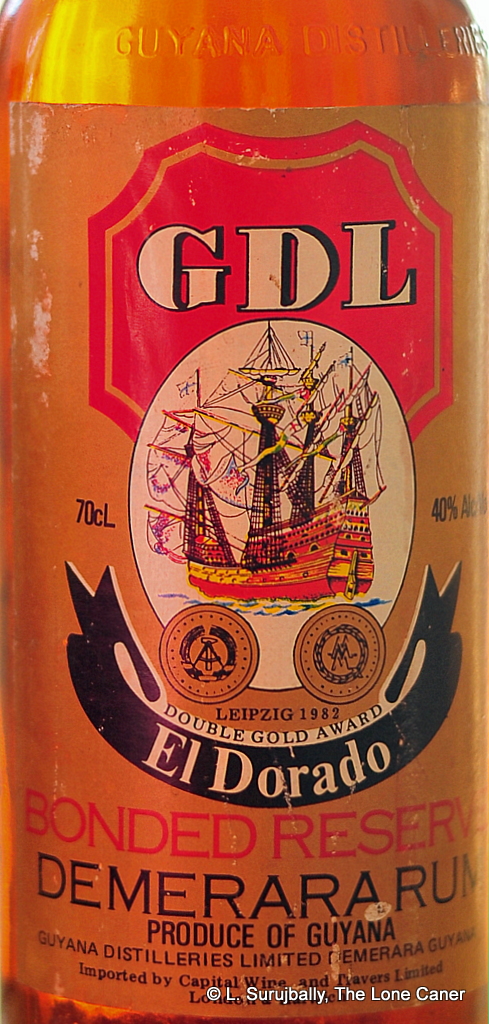 Tasting the Bonded Reserve raised all sorts of questions, and for anyone into Mudland rums, the first one had to be the one you’re all thinking of: from which still did it come? I didn’t think it was any of the wooden ones – there was none of that licorice or fruity intensity here that so distinguishes them. It was medium to light bodied in texture, very feebly sweet, and presented initially as dry – I’d suggest it was a column still product. Prunes, coffee, some burnt sugar, nougat and caramel, more of that faint leather and smoke background, all rounded out with the distant, almost imperceptible murmuring of citrus and crushed walnuts, nothing special. The finish just continued on these muted notes of light raisins and molasses and toffee, but too little of everything or anything to excite interest beyond the historical.
Tasting the Bonded Reserve raised all sorts of questions, and for anyone into Mudland rums, the first one had to be the one you’re all thinking of: from which still did it come? I didn’t think it was any of the wooden ones – there was none of that licorice or fruity intensity here that so distinguishes them. It was medium to light bodied in texture, very feebly sweet, and presented initially as dry – I’d suggest it was a column still product. Prunes, coffee, some burnt sugar, nougat and caramel, more of that faint leather and smoke background, all rounded out with the distant, almost imperceptible murmuring of citrus and crushed walnuts, nothing special. The finish just continued on these muted notes of light raisins and molasses and toffee, but too little of everything or anything to excite interest beyond the historical.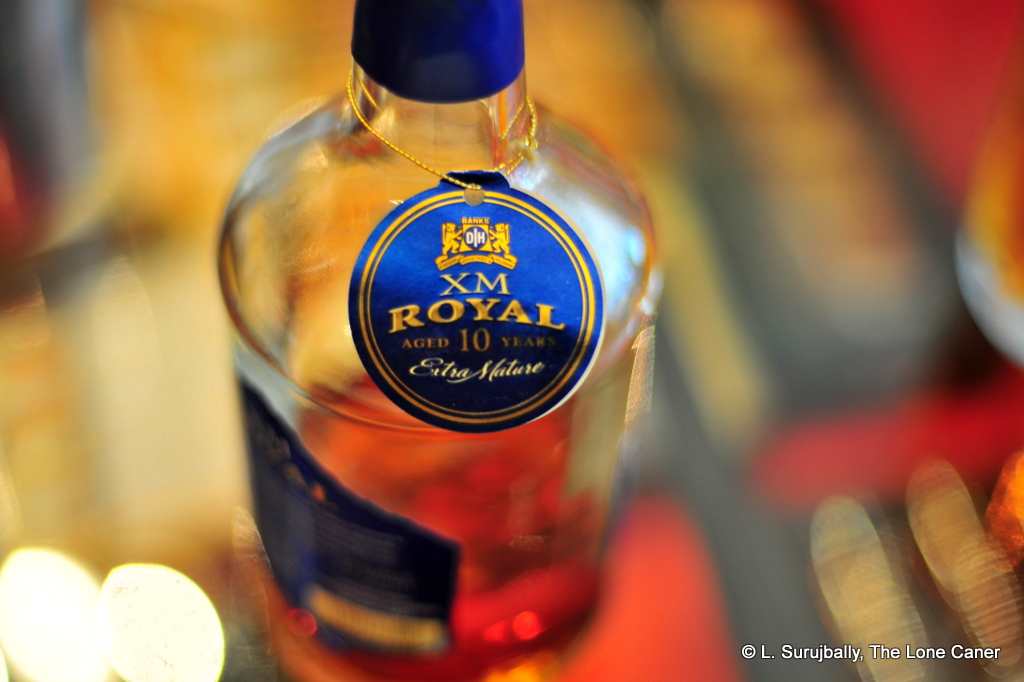
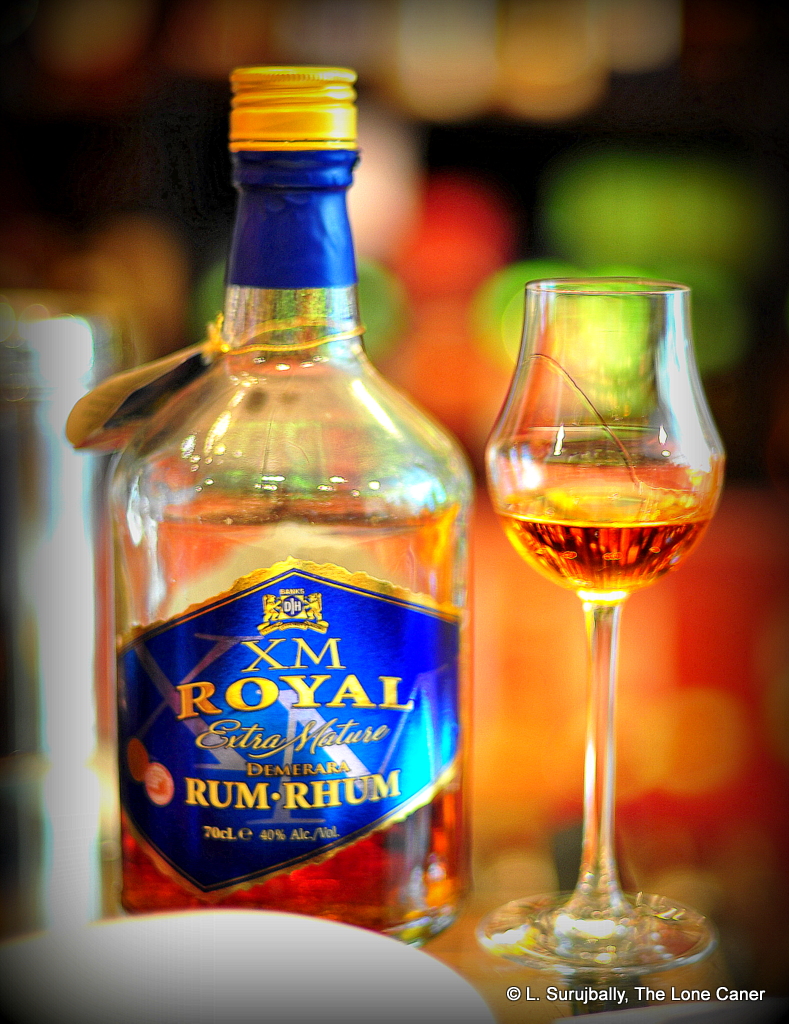 Starting as “Demerara Ice House” (there really was an ice factory in Water Street, and yes, it’s still there) and now called D’Aguiar’s Industries and Holdings (hence the DIH) at the beginning of the 20th century, the D’Aguiar family built up a huge food and drinks conglomerate, of which rums remain a relatively small part – they were and remain one of the first and largest bottlers in the Caribbean. They have a huge facility right outside Georgetown in the fragrantly named “Thirst Park”, they make beer, soft drinks, distilled water (among many other consumer nibbles) and with respect to rums, act as blenders, not makers like DDL. Their best known rums back then were the 5, 10 and 15 year old, the
Starting as “Demerara Ice House” (there really was an ice factory in Water Street, and yes, it’s still there) and now called D’Aguiar’s Industries and Holdings (hence the DIH) at the beginning of the 20th century, the D’Aguiar family built up a huge food and drinks conglomerate, of which rums remain a relatively small part – they were and remain one of the first and largest bottlers in the Caribbean. They have a huge facility right outside Georgetown in the fragrantly named “Thirst Park”, they make beer, soft drinks, distilled water (among many other consumer nibbles) and with respect to rums, act as blenders, not makers like DDL. Their best known rums back then were the 5, 10 and 15 year old, the 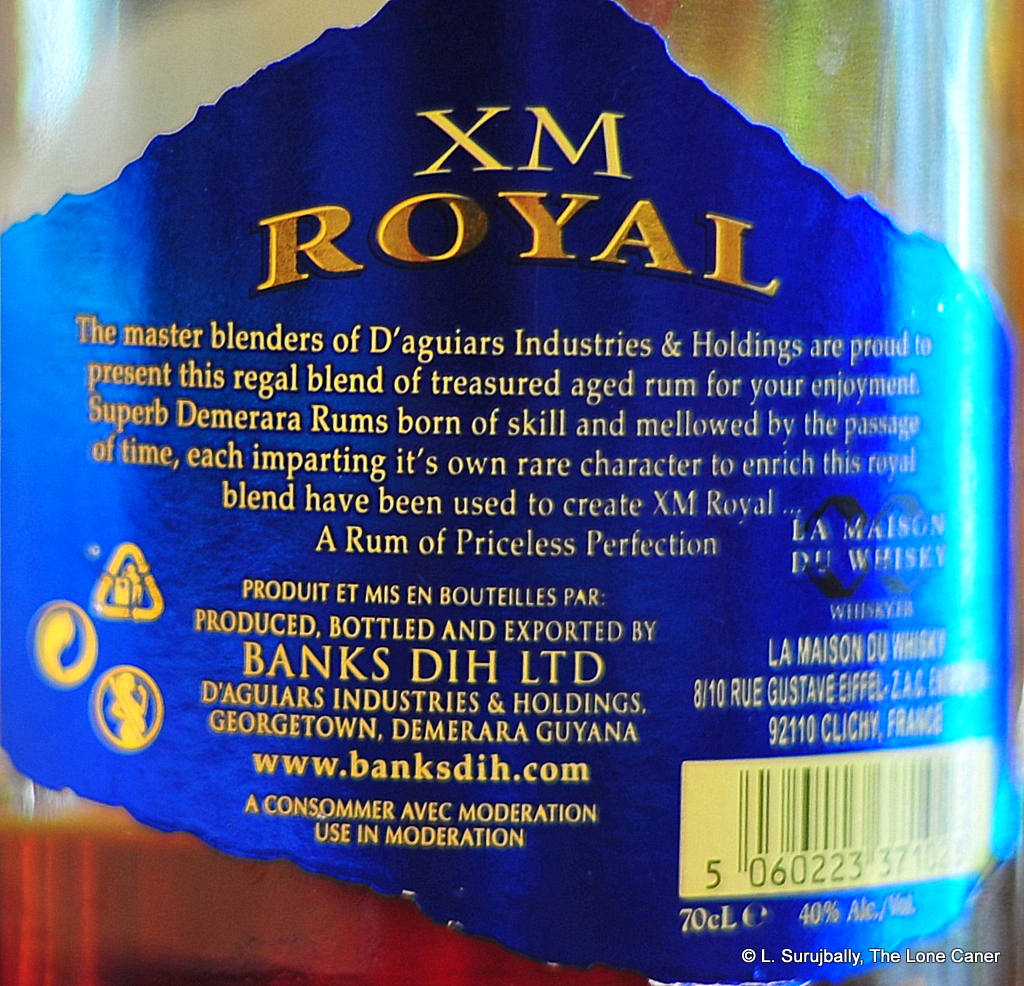 My own opinion was that it lacked body and needed a firmer texture…the XM 10, while not exactly anorexic, gave the impression of having rather more potential than actuality, and the flavours, decent and tasty enough by themselves, suffered somewhat from dumbing things down to standard strength (this may be my personal preferences talking — I’ve gone on record many times in stating that 40% is just not good enough for me anymore — so take that bias into account). On the other hand, maybe it’s like the DDL 12 year old, a bridge to the better rums in the XM universe like the 12 and the 15…and since I obtained those the other day, once I review them I can tell you whether this paucity of character is a characteristic of this rum only, or some sort of preference of the master blender that permeates the line. Honestly, I hope it’s the former.
My own opinion was that it lacked body and needed a firmer texture…the XM 10, while not exactly anorexic, gave the impression of having rather more potential than actuality, and the flavours, decent and tasty enough by themselves, suffered somewhat from dumbing things down to standard strength (this may be my personal preferences talking — I’ve gone on record many times in stating that 40% is just not good enough for me anymore — so take that bias into account). On the other hand, maybe it’s like the DDL 12 year old, a bridge to the better rums in the XM universe like the 12 and the 15…and since I obtained those the other day, once I review them I can tell you whether this paucity of character is a characteristic of this rum only, or some sort of preference of the master blender that permeates the line. Honestly, I hope it’s the former.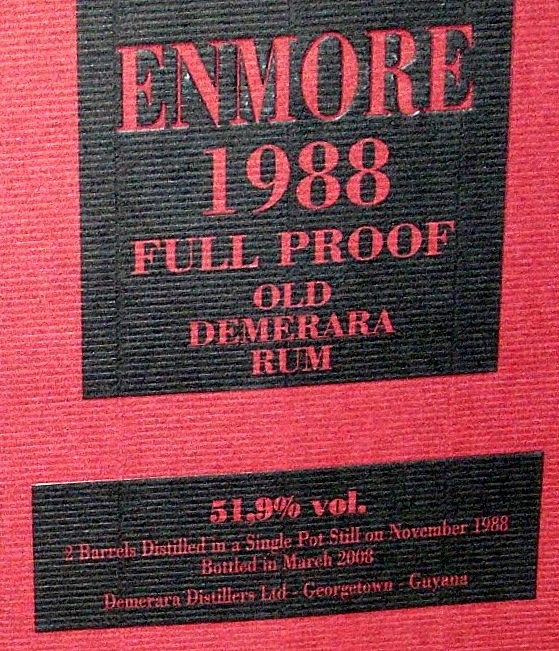
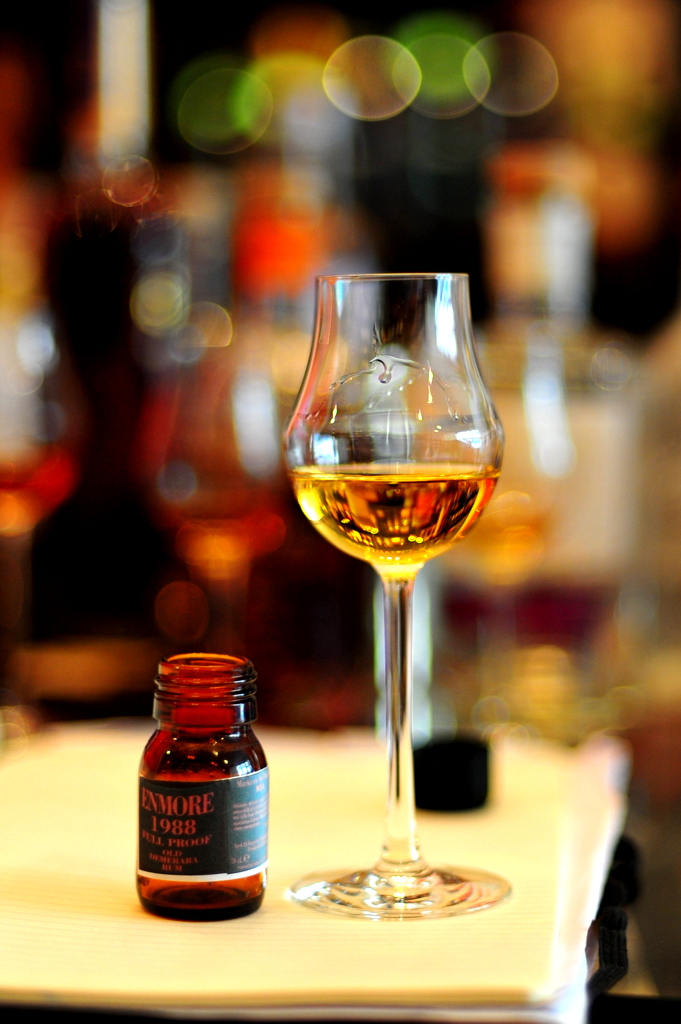



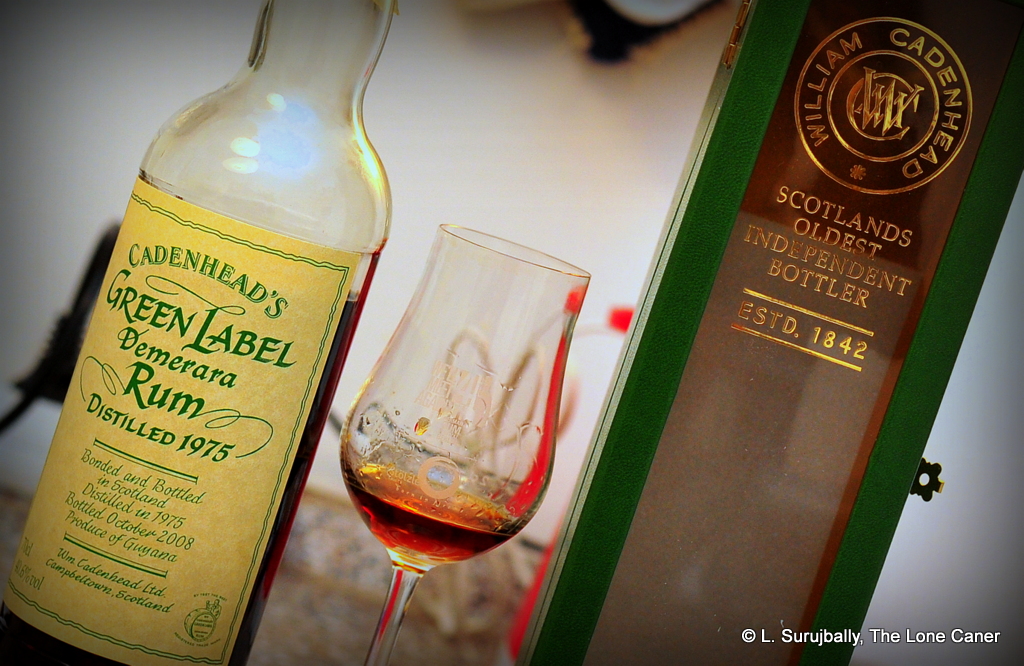
 The dark mahogany-red Cadenhead rum was actually quite similar to the Norse Cask. Some rubber and medicinals and turpentine started the nose party going, swiftly gone. Then the licorice and tobacco — of what I’m going to say was a blend with a majority of Port Mourant distillate — thundered onto the stage, followed by a muted backup chorus of wood, oak, hay, raisins, caramel, brown sugar. I sensed apricots in syrup (or were those peach slices?). It’s the lack of oomph on the strength that made trying the rum an exercise in frustrated patience for me. I knew the fair ladies were in there…they just didn’t want to come out and dance (and paradoxically, that made me pay closer attention). It took a while to tease out the notes, but as I’ve said many times before, the PM profile is pretty unmistakeable and can’t be missed…and that was damned fine, let me reassure you, no matter what else was blended into the mix.
The dark mahogany-red Cadenhead rum was actually quite similar to the Norse Cask. Some rubber and medicinals and turpentine started the nose party going, swiftly gone. Then the licorice and tobacco — of what I’m going to say was a blend with a majority of Port Mourant distillate — thundered onto the stage, followed by a muted backup chorus of wood, oak, hay, raisins, caramel, brown sugar. I sensed apricots in syrup (or were those peach slices?). It’s the lack of oomph on the strength that made trying the rum an exercise in frustrated patience for me. I knew the fair ladies were in there…they just didn’t want to come out and dance (and paradoxically, that made me pay closer attention). It took a while to tease out the notes, but as I’ve said many times before, the PM profile is pretty unmistakeable and can’t be missed…and that was damned fine, let me reassure you, no matter what else was blended into the mix.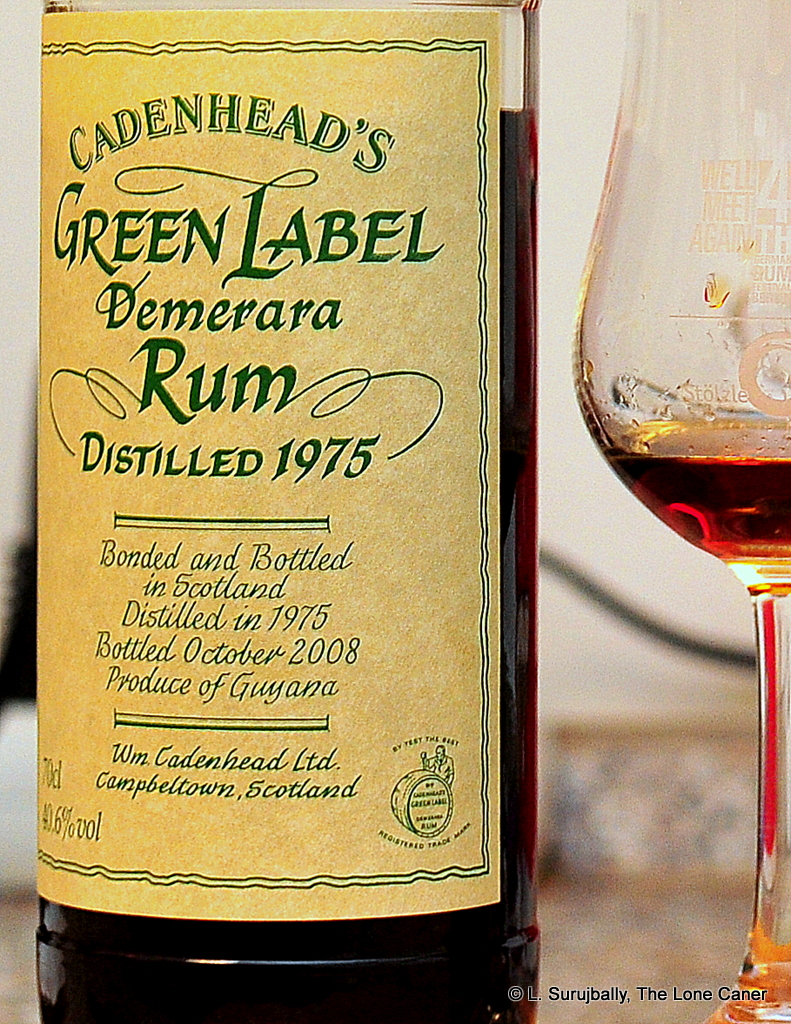 The word “accessible” I used above does not mean available, but
The word “accessible” I used above does not mean available, but 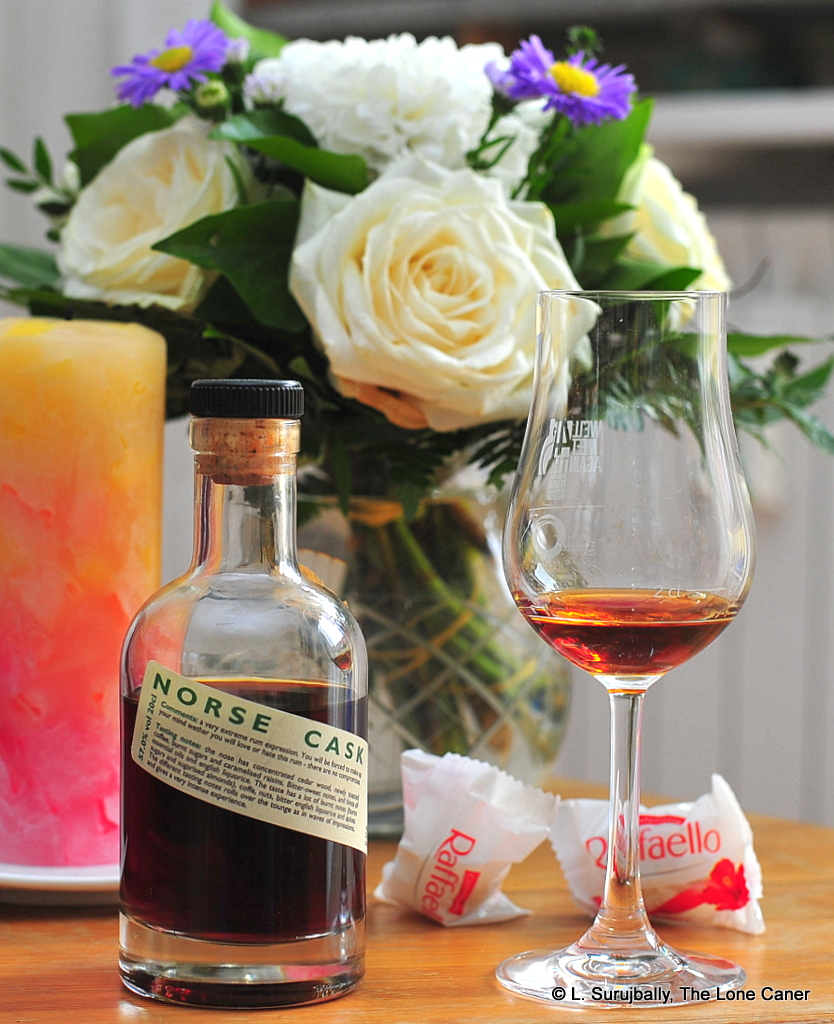
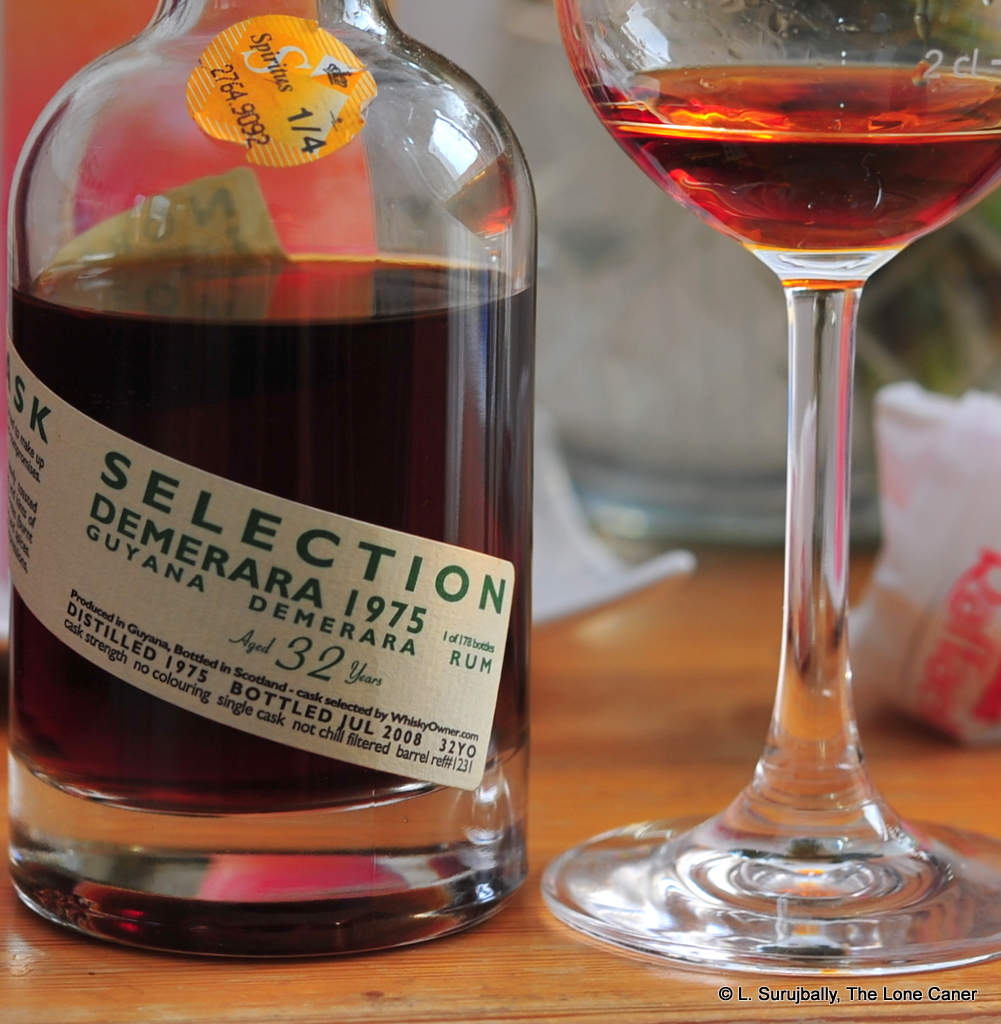
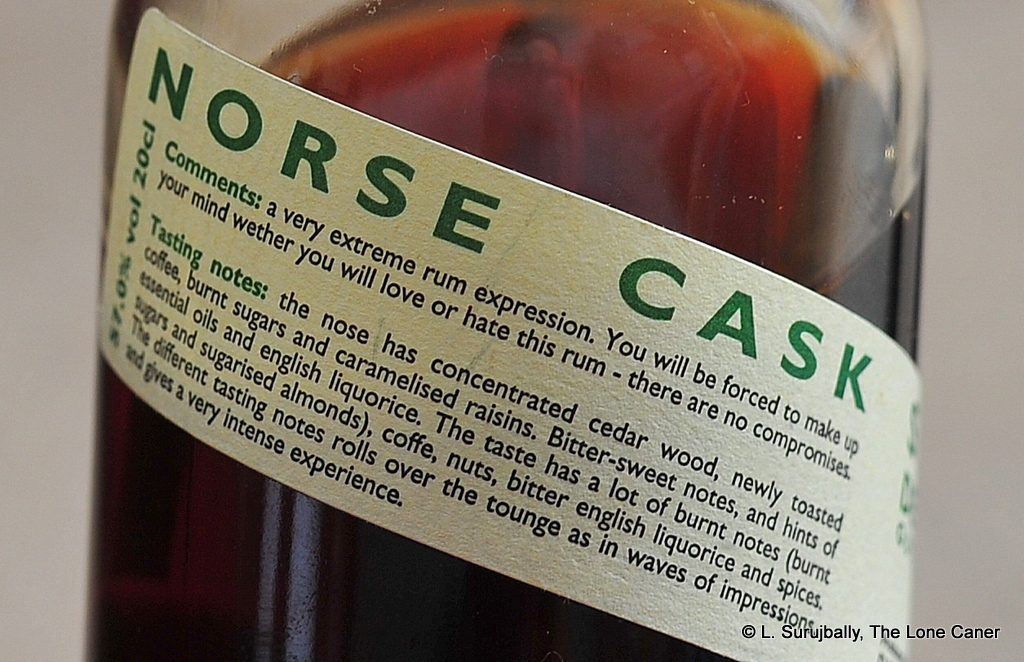
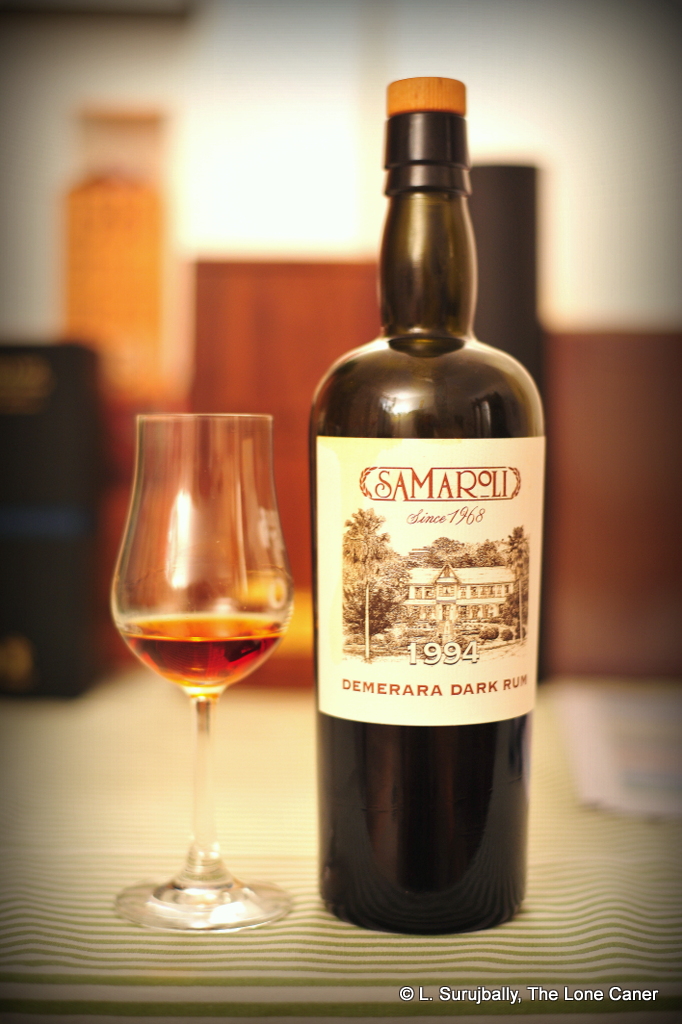 A very well blended, original melange of traditional Demerara flavours that comes up to the bar without effort, but doesn’t jump over.
A very well blended, original melange of traditional Demerara flavours that comes up to the bar without effort, but doesn’t jump over.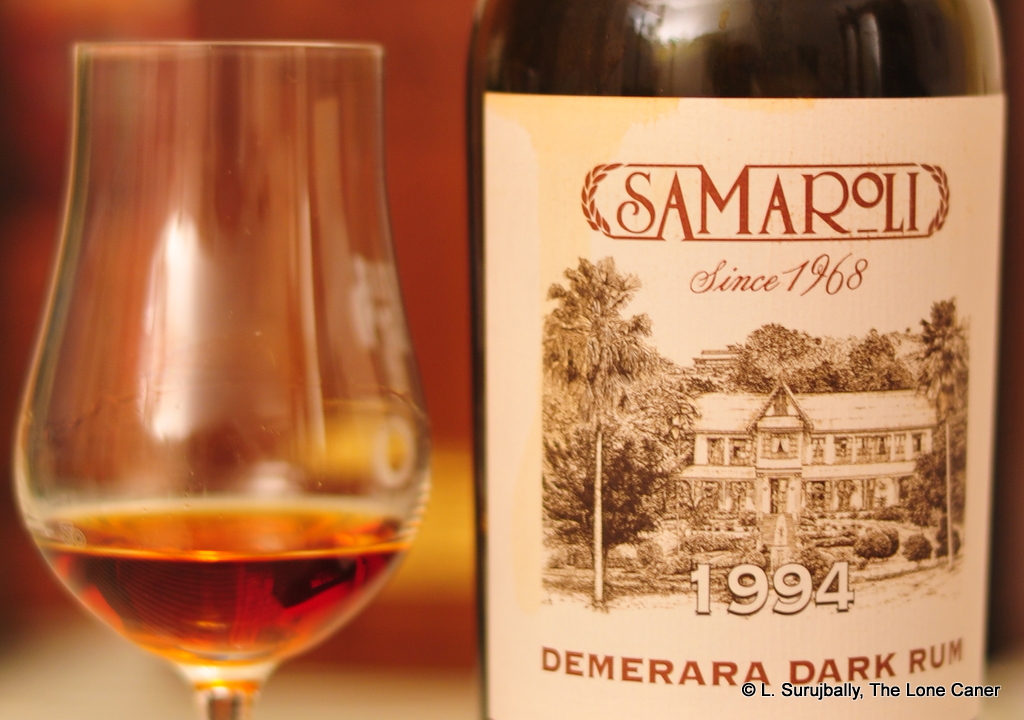
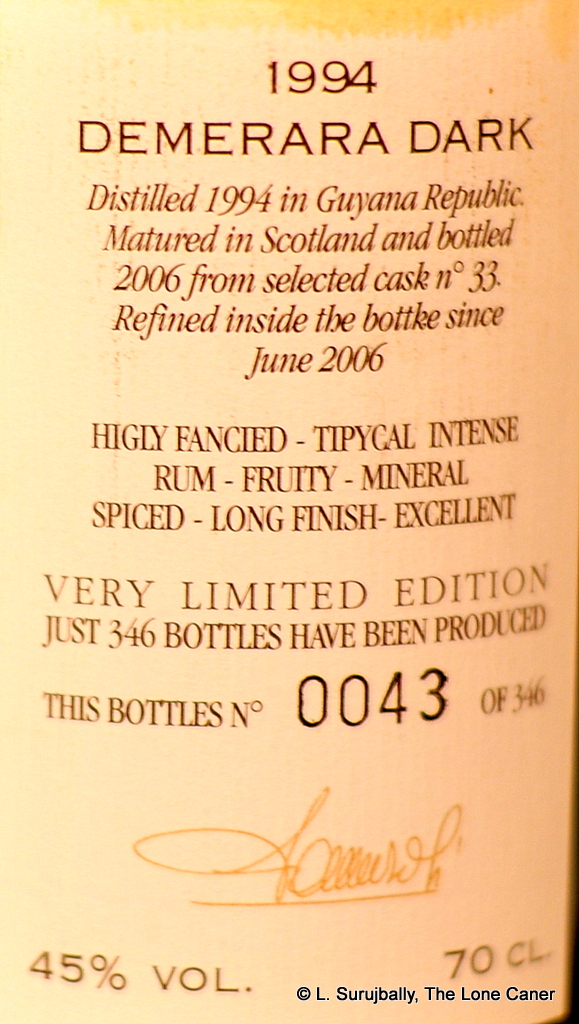
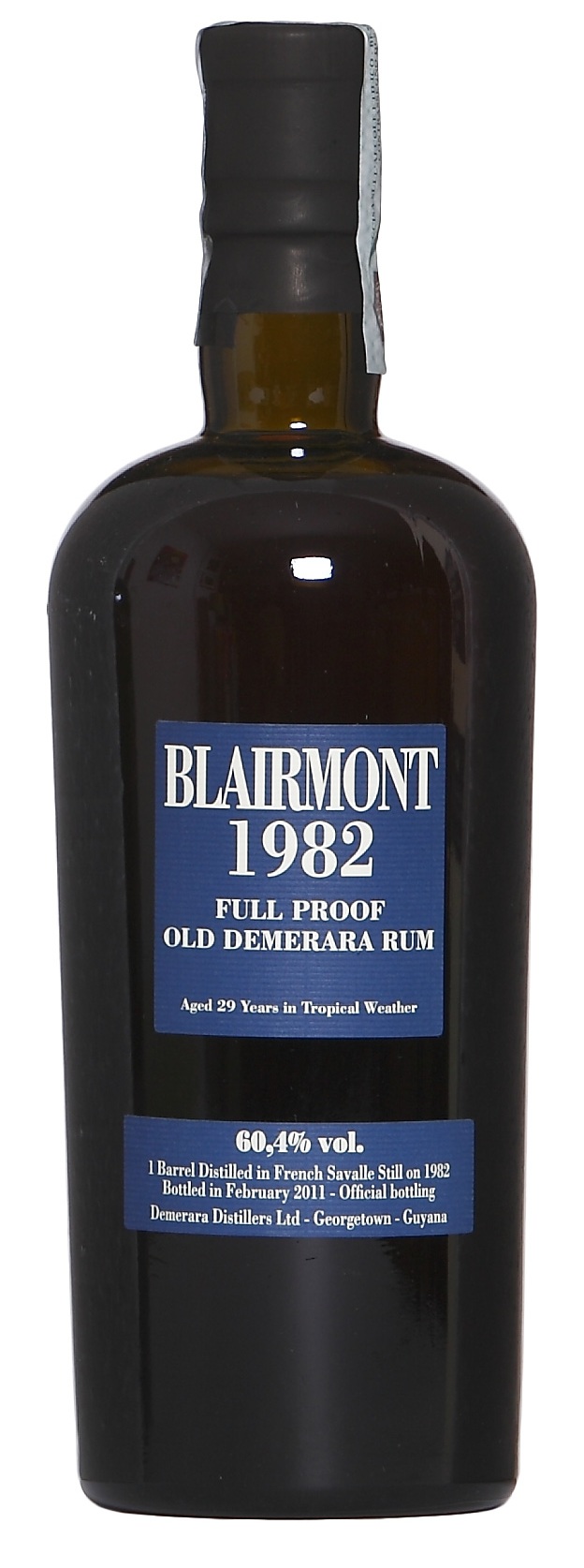 Rumaniacs Review 015 | 0415
Rumaniacs Review 015 | 0415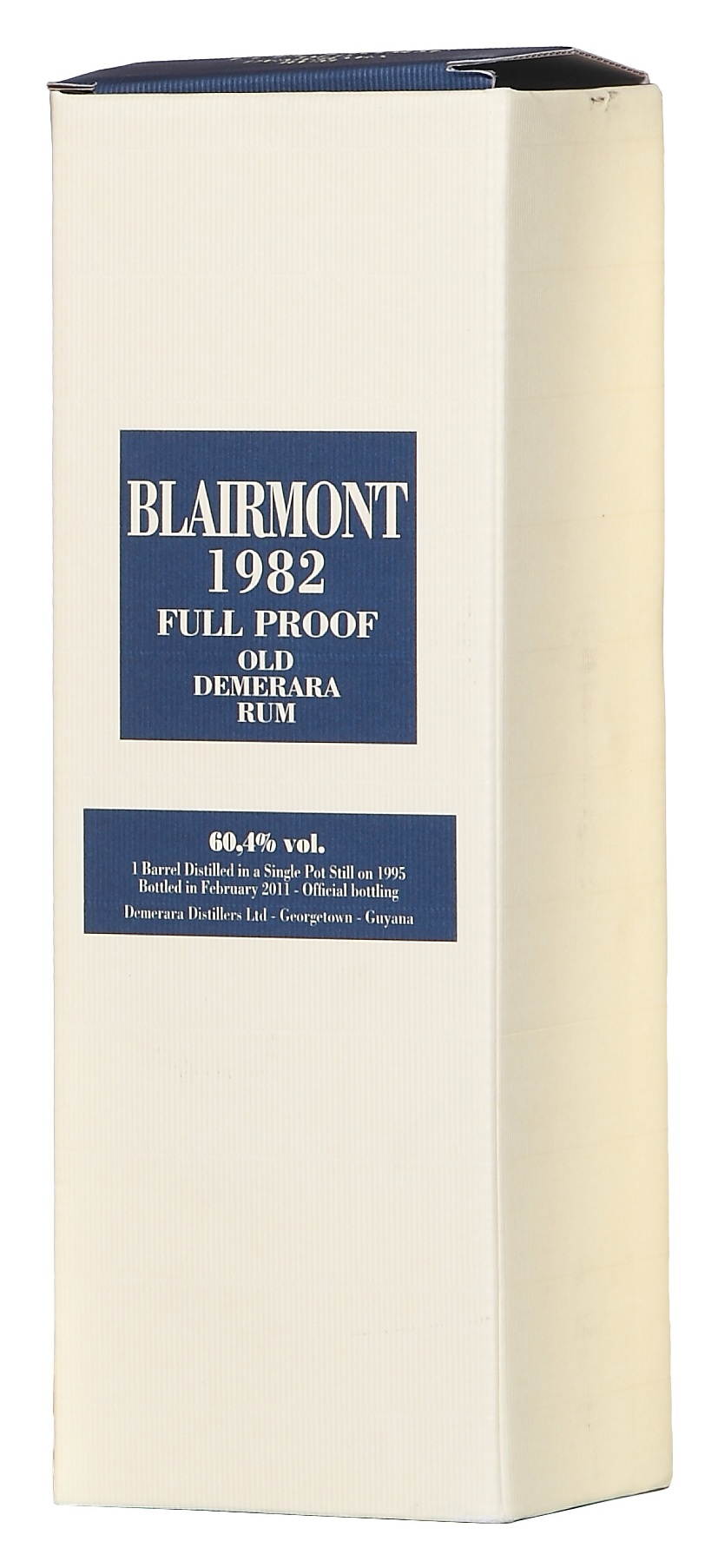
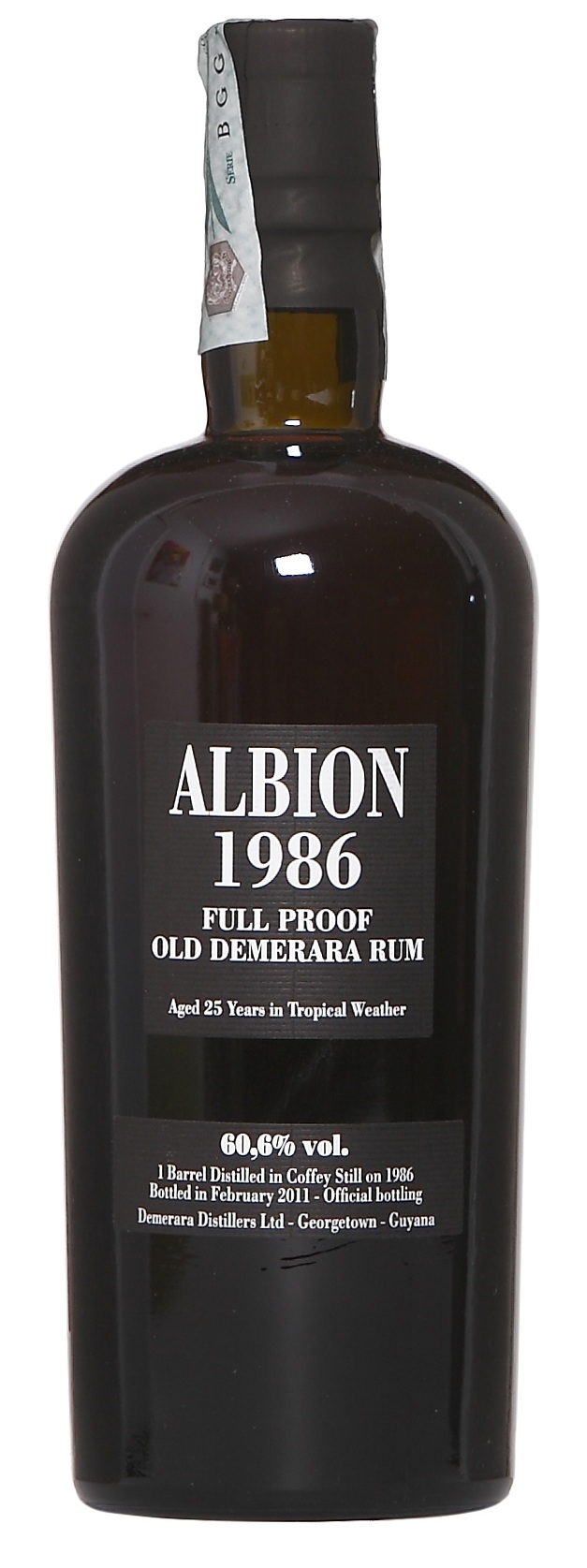 Rumaniacs Review 013 | 0413
Rumaniacs Review 013 | 0413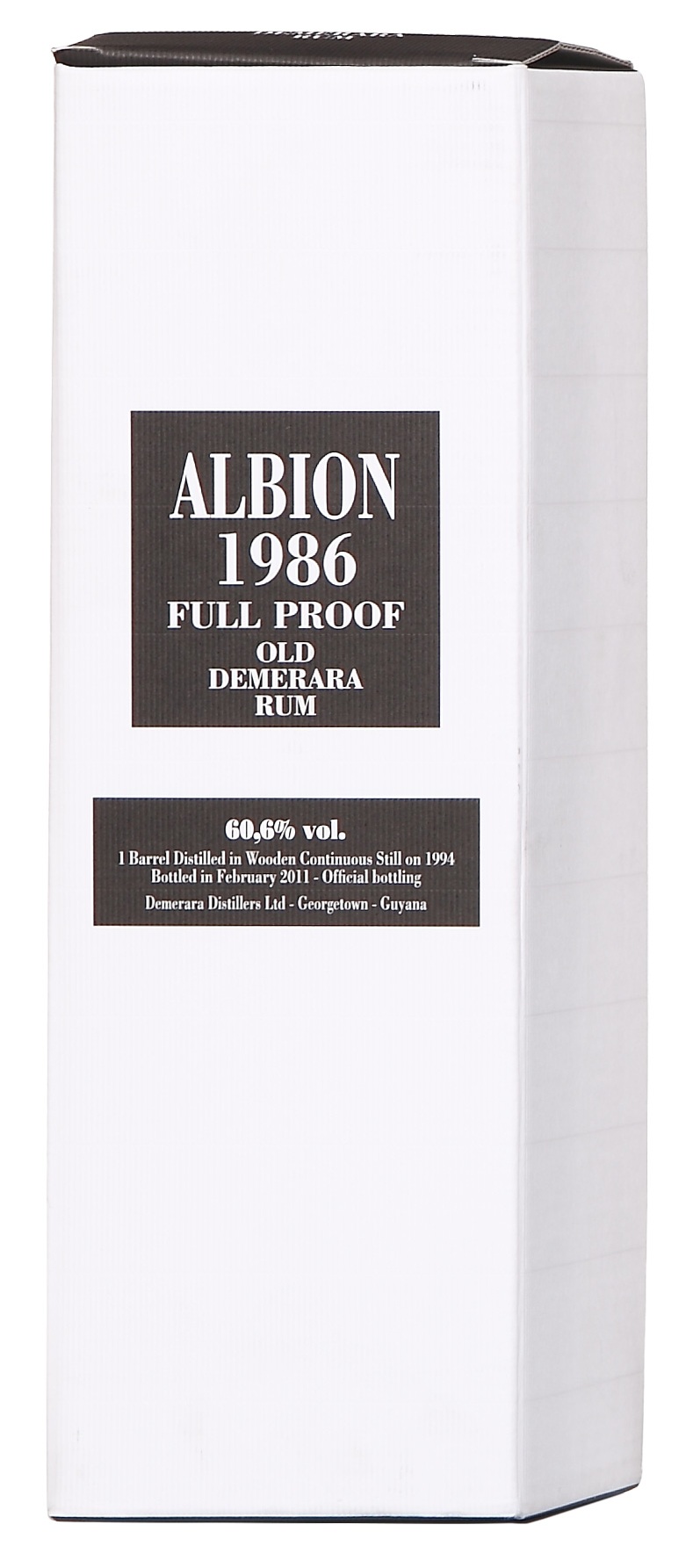
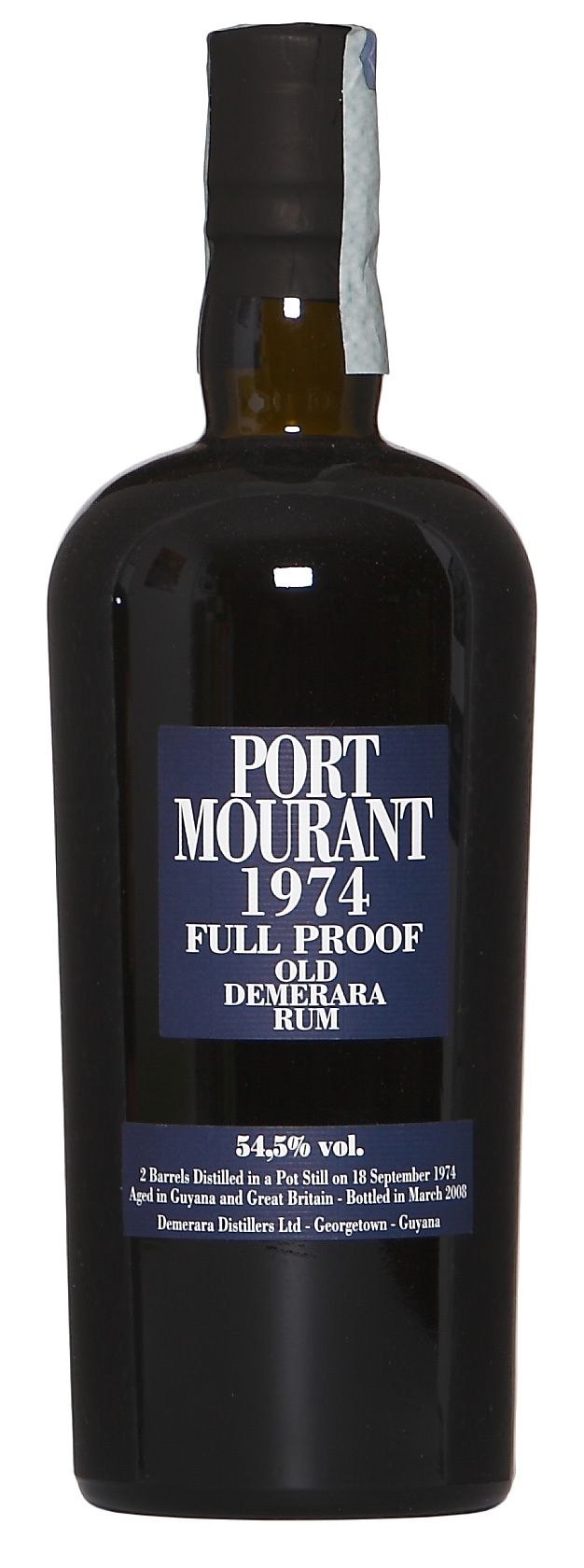 Rumaniacs Review 012 | 0412
Rumaniacs Review 012 | 0412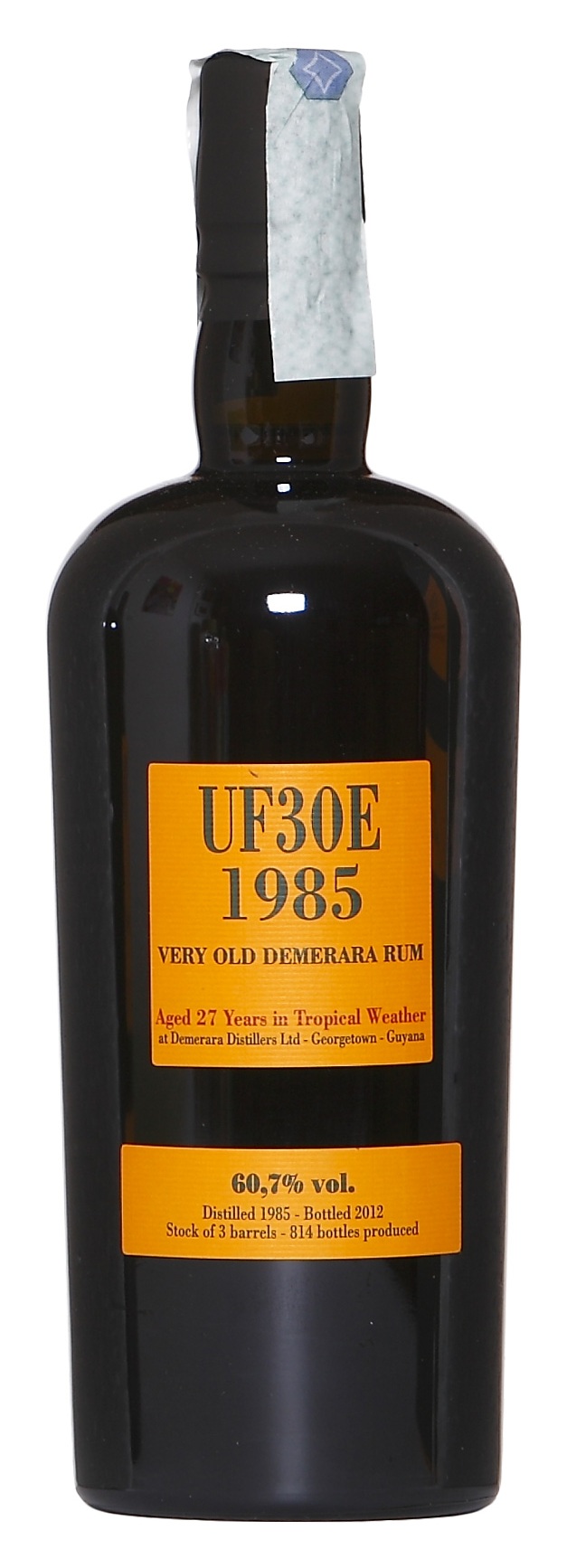 Rumaniacs Review 011 | 0411
Rumaniacs Review 011 | 0411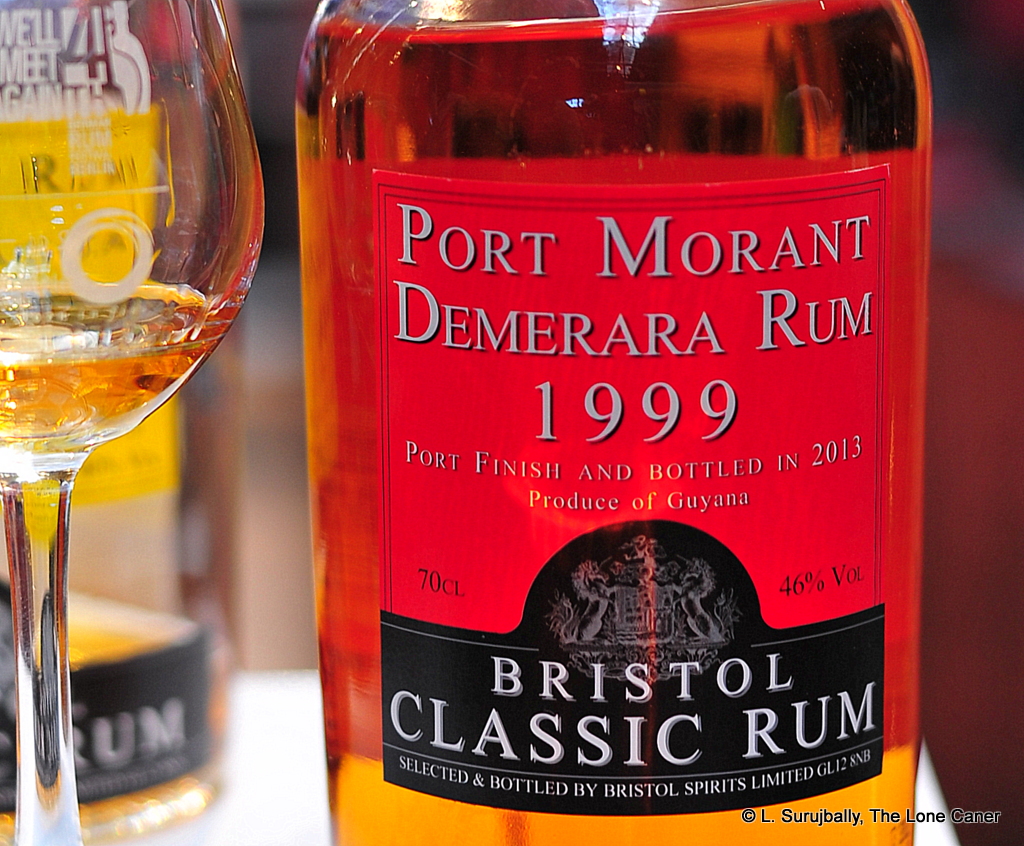
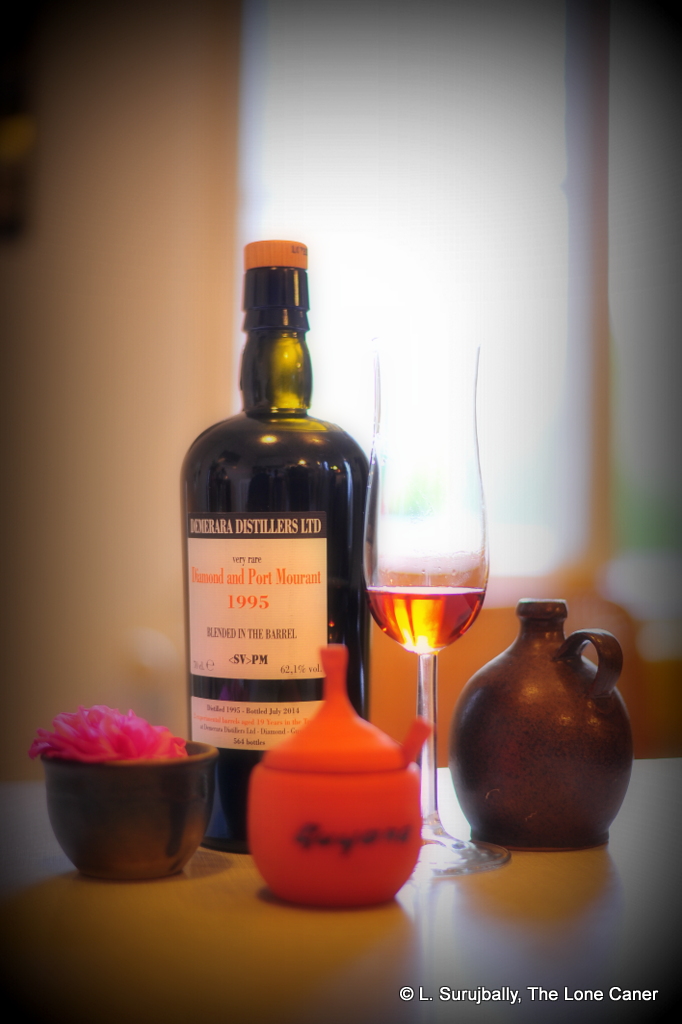
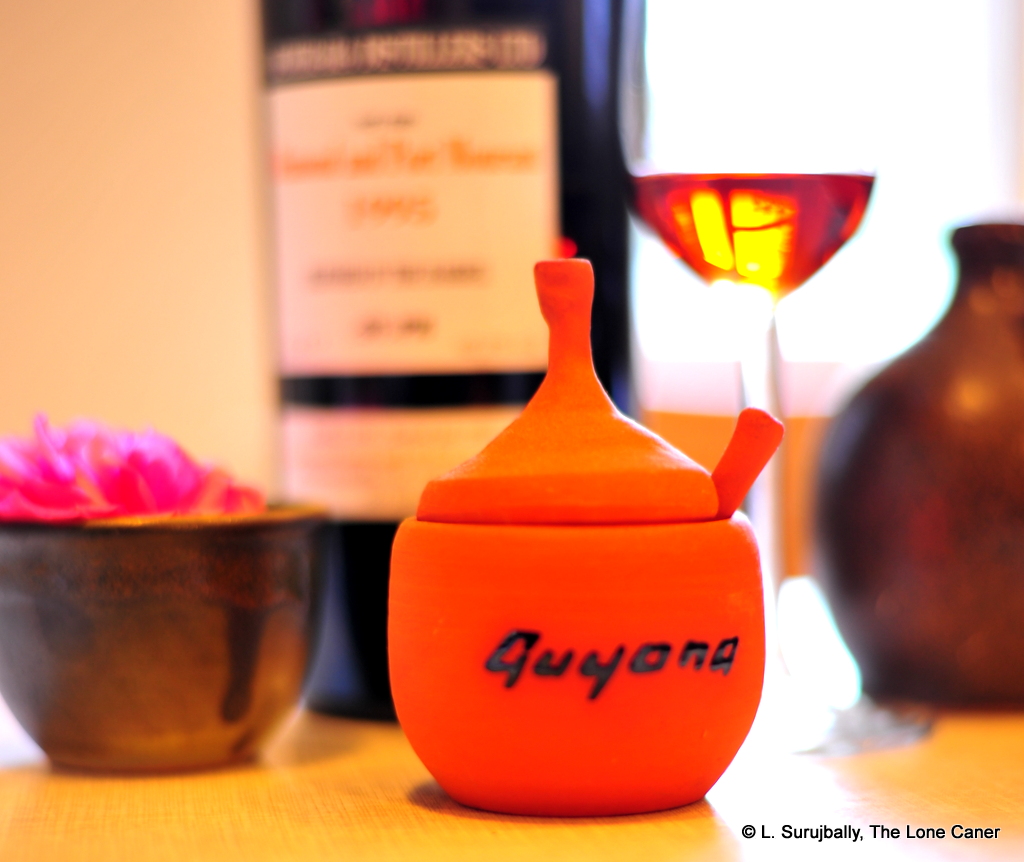
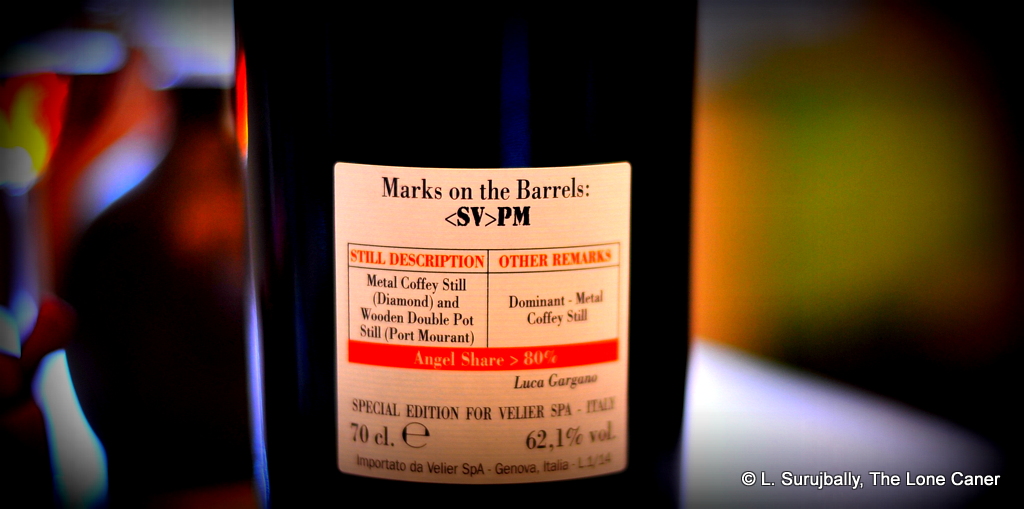
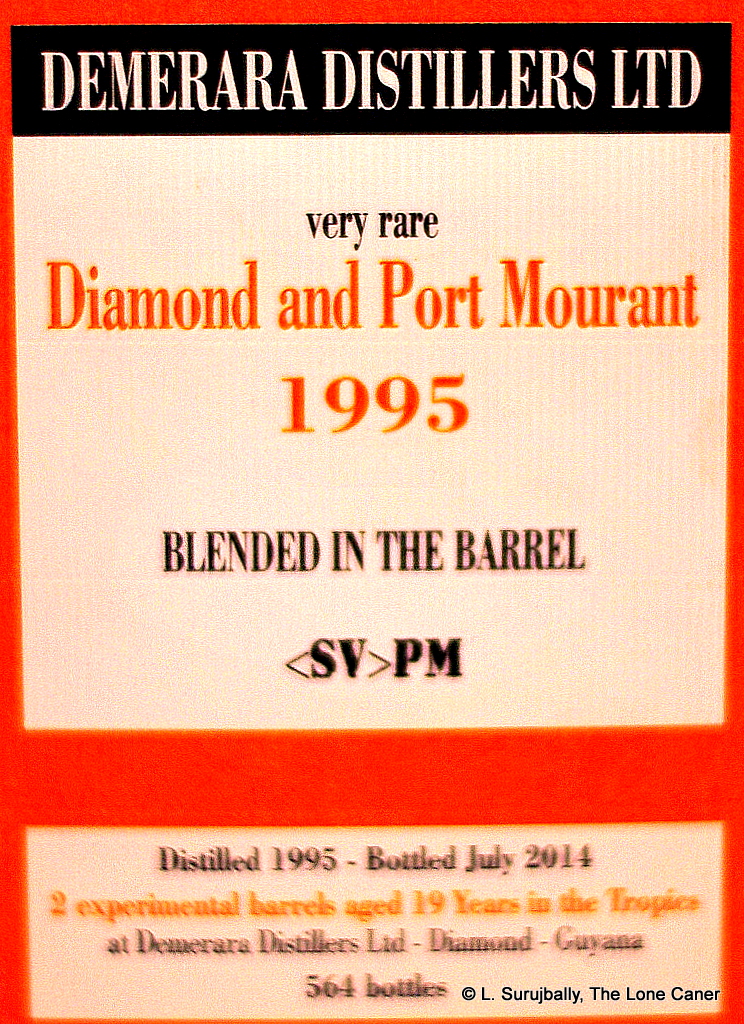
 Rumaniacs Review 004 | 0404
Rumaniacs Review 004 | 0404